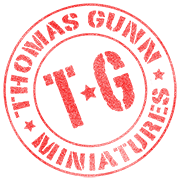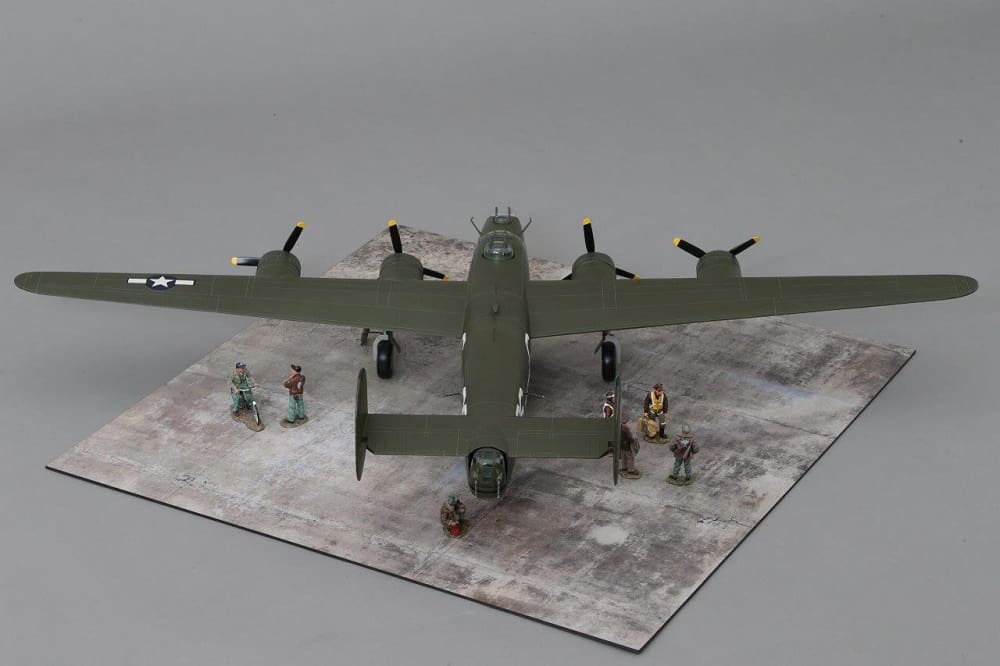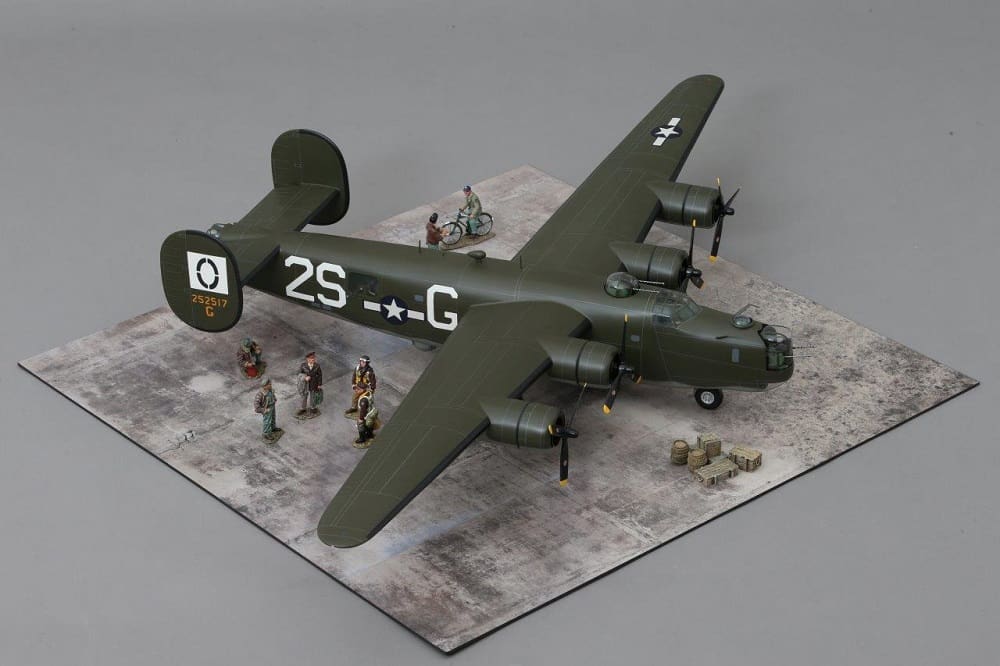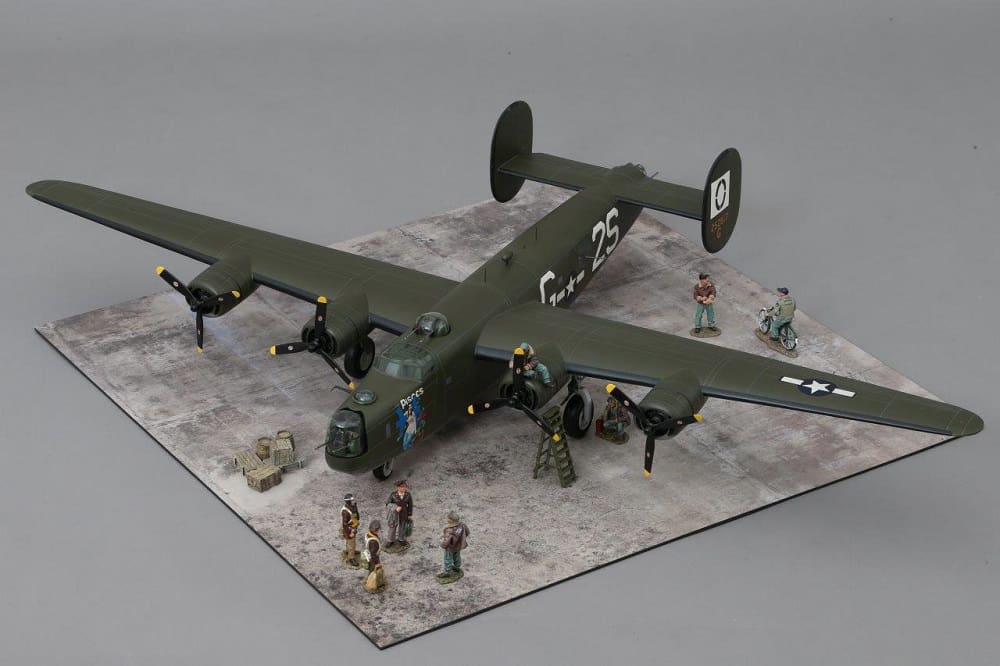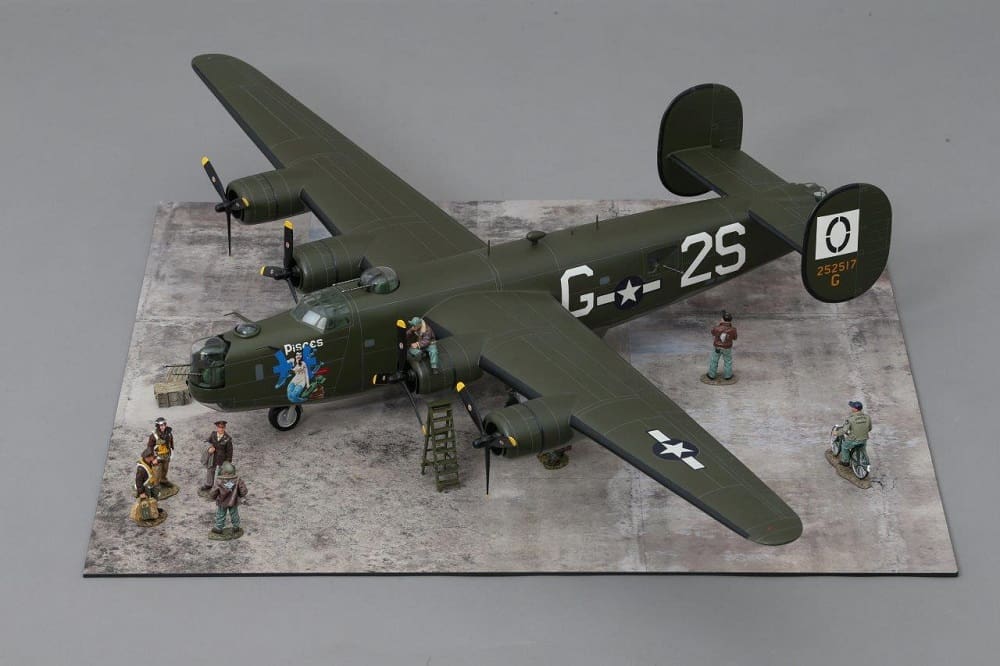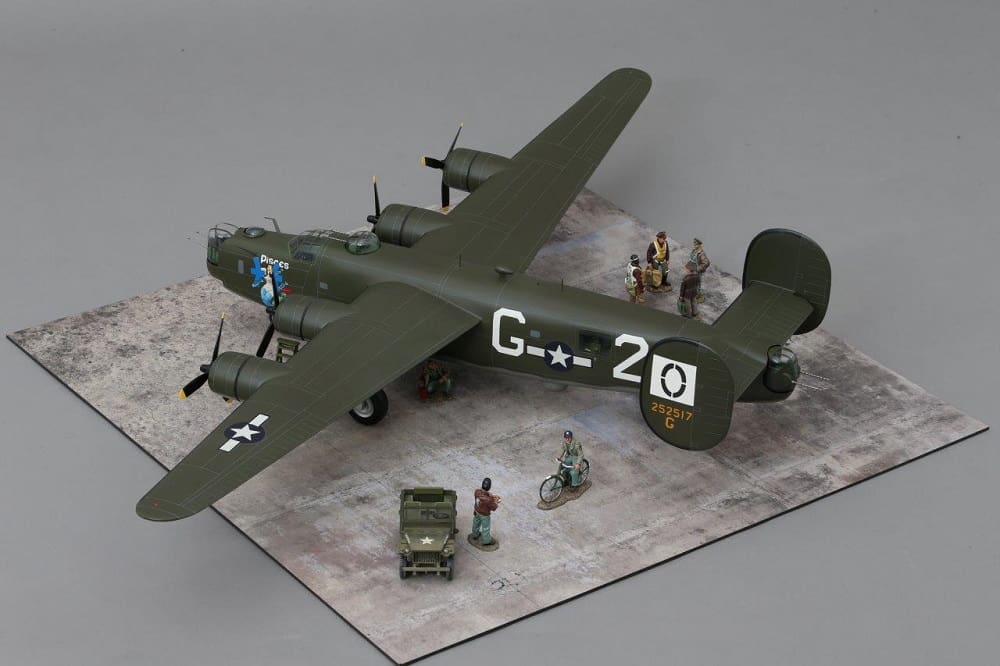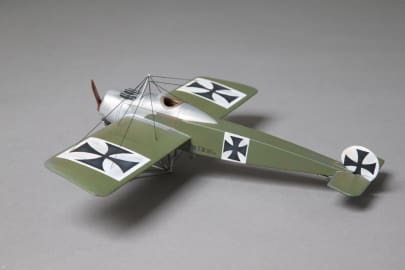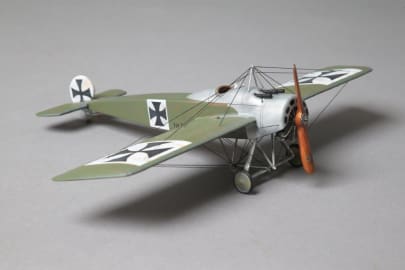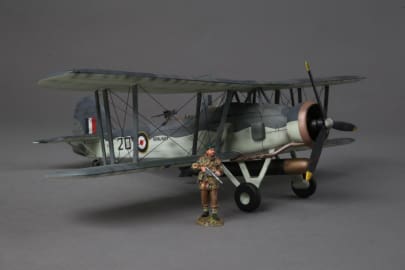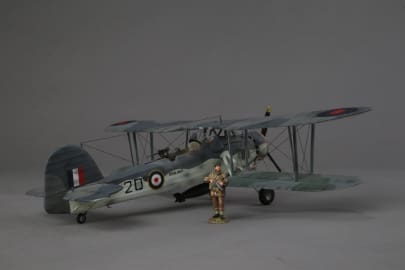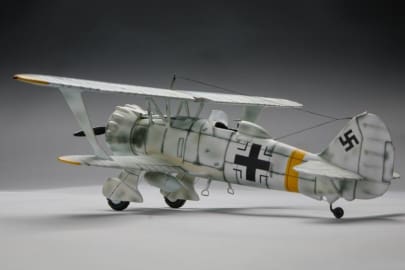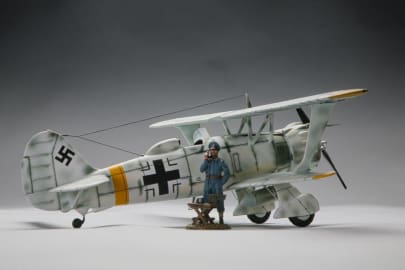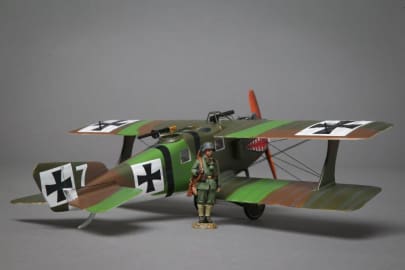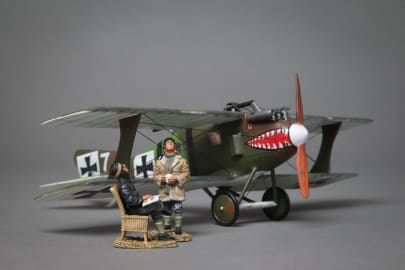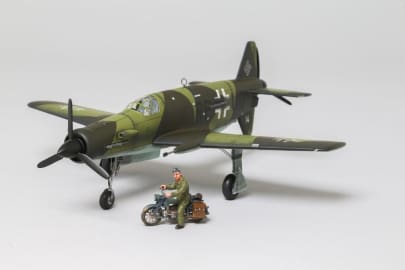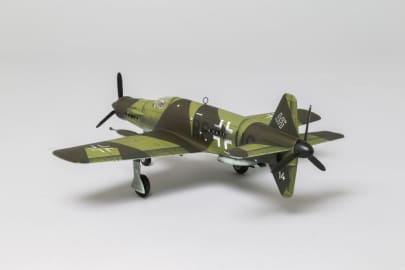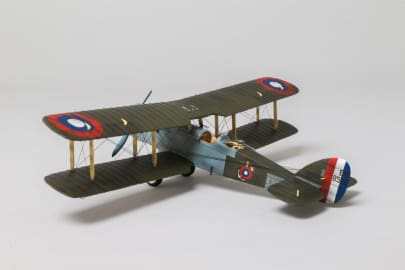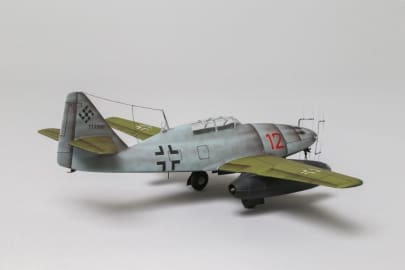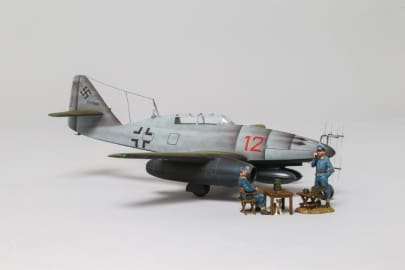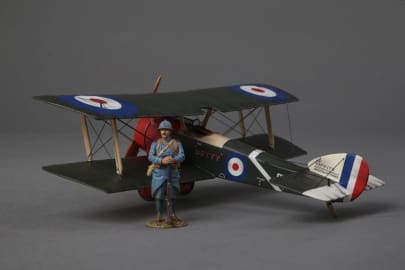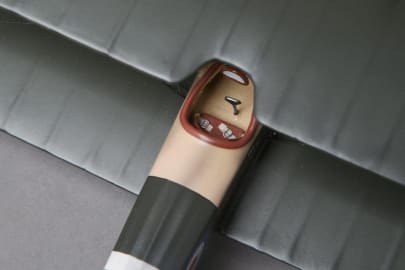- Free shipping available on orders over £100 (UK) £250 (EU) and $300 rest of the world
WOW267 B-24 Liberator ‘Pisces’
£1,300.00
Out of stock
Description
Description
The Consolidated B-24 Liberator was an American heavy bomber, designed by Consolidated Aircraft of San Diego, California. It was known within the company as the Model 32, and some initial production aircraft were laid down as export models designated as various LB-30s, in the Land Bomber design category.
The United States Army Air Forces (USAAF) took delivery of its first B-24As in mid-1941. Over the next three years, B-24 squadrons deployed to all theatres of the war: African, European, China-Burma-India, the Anti-submarine Campaign and the Pacific Theatre. In the Pacific to simplify logistics and to take advantage of its longer range, the B-24 (and its twin, the U.S. Navy PB4Y) was the chosen standard heavy bomber. By mid-1943, the shorter-range B-17 was phased out. The Liberators which had served early in the war in the Pacific continued their efforts from the Philippines, Australia, Guadalcanal, Hawaii, and Midway Island.
So vital was the need for long-range operations, that at first USAAF used the type as transports. The sole B-24 in Hawaii was destroyed by the Japanese attack on Pearl Harbor on 7 December 1941. It had been sent to the Central Pacific for a very long-range reconnaissance mission that was preempted by the Japanese attack.
The first USAAF Liberators to carry out combat missions were 12 repossessed LB-30s deployed to Java with the 11th Bombardment Squadron (7th Bombardment Group) that flew their first combat mission in mid-January. Two were shot up by Japanese fighters, but both managed to land safely. One was written off due to battle damage and the other crash-landed on a beach.
US-based B-24s entered combat service in 1942 when on 6 June, four B-24s from Hawaii staging through Midway Island attempted an attack on Wake Island, but were unable to find it. The B-24 came to dominate the heavy bombardment role in the Pacific, because compared to the B-17 the B-24 was faster, had longer range, and could carry a ton more of bombs.
Our Liberator is in the markings of the 834th Squadron, which was known as the Zodiac Squadron, as all the 12 B-24’s had different signs of the zodiac painted on their noses. The original artwork was done by Cpl Phil Brinkman.
None of the Zodiac birds were lost during the 49 missions the 486th flew before transitioning to the Fortresses.
The figures shown are for scale purposes only and are not included with this item.
